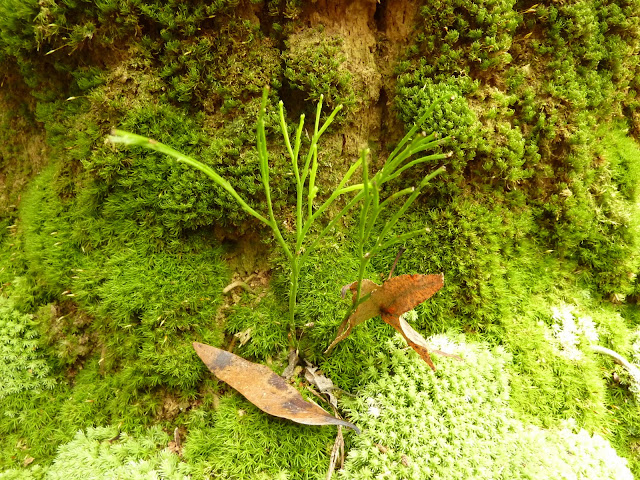Jim Conrad writes a terrific weekly naturalist’s newsletter that I receive via email (his website is in my list of Favorite Links). Currently living on a hacienda beside Chechen Itza in Mexico, he has acquired many Mayan friends by living beside and hanging out among them. Jim grows some of his own vegetables and discusses gardening with them, and being a gardener myself, it is interesting to read some of the conversations they have.
In today’s newsletter, Jim relates two discussions he had with Mayan farmers that might shock a modern organic grower; at least, I think it shocked Jim. He suggested to one fellow that laying down a mulch of leaf litter might aid in retarding soil moisture loss. The M-dude quickly responded by turning over a clump of leaves to reveal a large spider, and said "Look, that's the kind of thing that plant-trash on the ground attracts. That 'bicho' eats plants. Why attract things that'll eat up your garden?" Another Mayan sodbuster admitted that he knew of no instance when Mayans would use organic matter to cover the soil, saying "When dry weather comes, mulch sponges up moisture from the soil, and of course that hurts the plants." Thus, Jim felt moved to bemoan their ignorance of soil moisture control and feeding habits of spiders, not to mention the fact that the spider they looked at ATE ‘bichos’ rather than WAS one.
Forgive me for saying so, but I saw it coming. Some time back, Jim had a story about woodpeckers in the garden, specifically a species closely related to our own red-bellied woodpecker. It seems that the Mayan farmers hate that bird because they believe it damages tomatoes by eating the fruit. I must admit that I grinned when I read that, because I had a similar experience with a woodpecker and a tomato, but mine had a much different and far better ending: http://tinyurl.com/2d328xx
Like Jim’s Mayan farmers, my neighbor misinterpreted the actions of a red-bellied woodpecker that was damaging an occasional garden tomato. By conducting a little investigation, I discovered that the woodpecker would drill a dime-sized hole in a single tomato and leave, and when it returned a couple of hours later, there would be a few insects in the wound, sipping juice. The woodpecker would eat the invertebrates and leave, and continue to revisit that tomato every few hours in the day until the tomato soured. It would then repeat the process on a subsequent tomato, but rarely used more than one tomato “trap” at a time. My neighbor was educated and was not raised by traditionalist subsistence farmers, so he (we) learned from the experience that woodpeckers set traps for garden pests. We also concluded that, just possibly, fewer tomatoes were ruined when there was a woodpecker in the garden because of the efficiency with which the traps lured vegetable-eating insects.
Jim inadvertently reminds me over and over again that so-called “folk wisdom” often stinks. My grandfather, for example, grew up in the 1890s+ and truly believed that polluted water cleaned itself after flowing seven miles. I bet you have examples of this, too. Maybe we could collate ‘em all into a poster for the bath…, er, I mean the refrigerator.


















